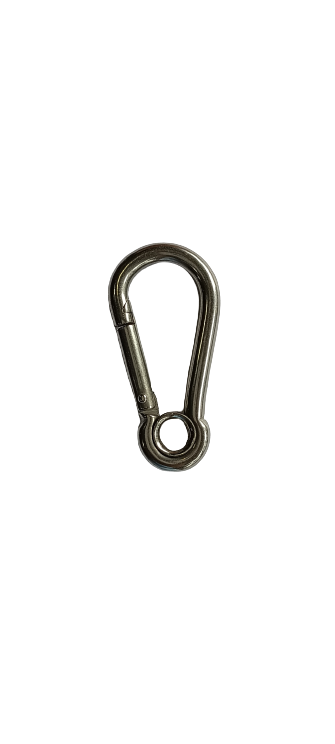
SNAP HOOK
Key features of a snap hook:
Shape: Snap hooks typically have an oblong or D-shaped design with a gate that opens and closes. The D-shape provides a good balance between strength and weight, making it suitable for various tasks.
Gate: The gate is the movable part of the snap hook that allows for opening and closing. It usually has a spring mechanism that self-closes when released, providing a secure connection.
Locking Mechanism: Some snap hooks have additional locking mechanisms, such as screw locks or twist locks, to prevent accidental opening of the gate. These locking types are commonly used in critical applications like climbing.
Materials: Snap hooks are typically made of durable materials like steel, aluminum, or stainless steel. The choice of material depends on the intended use and the level of strength required.
Common uses of snap hooks:
Climbing: In rock climbing and mountaineering, snap hooks are used to attach ropes, slings, and other climbing equipment to harnesses or anchor points.
Camping and Hiking: Snap hooks are used for securing gear, attaching items to backpacks, setting up shelters, and various other camping and hiking tasks.
Sailing and Boating: In sailing and boating, snap hooks are employed to secure lines, rigging, and equipment on board.
Safety and Fall Protection: Snap hooks are used in safety equipment and fall protection systems to connect harnesses and lanyards to anchor points.
Keychains and Accessories: Snap hooks are commonly used in keychains, lanyards, and various fashion accessories for easy attachment to bags or clothing.
It is crucial to use snap hooks appropriately and ensure they are rated for the intended load and application. Always follow the manufacturer's guidelines and inspect them regularly for signs of wear or damage.